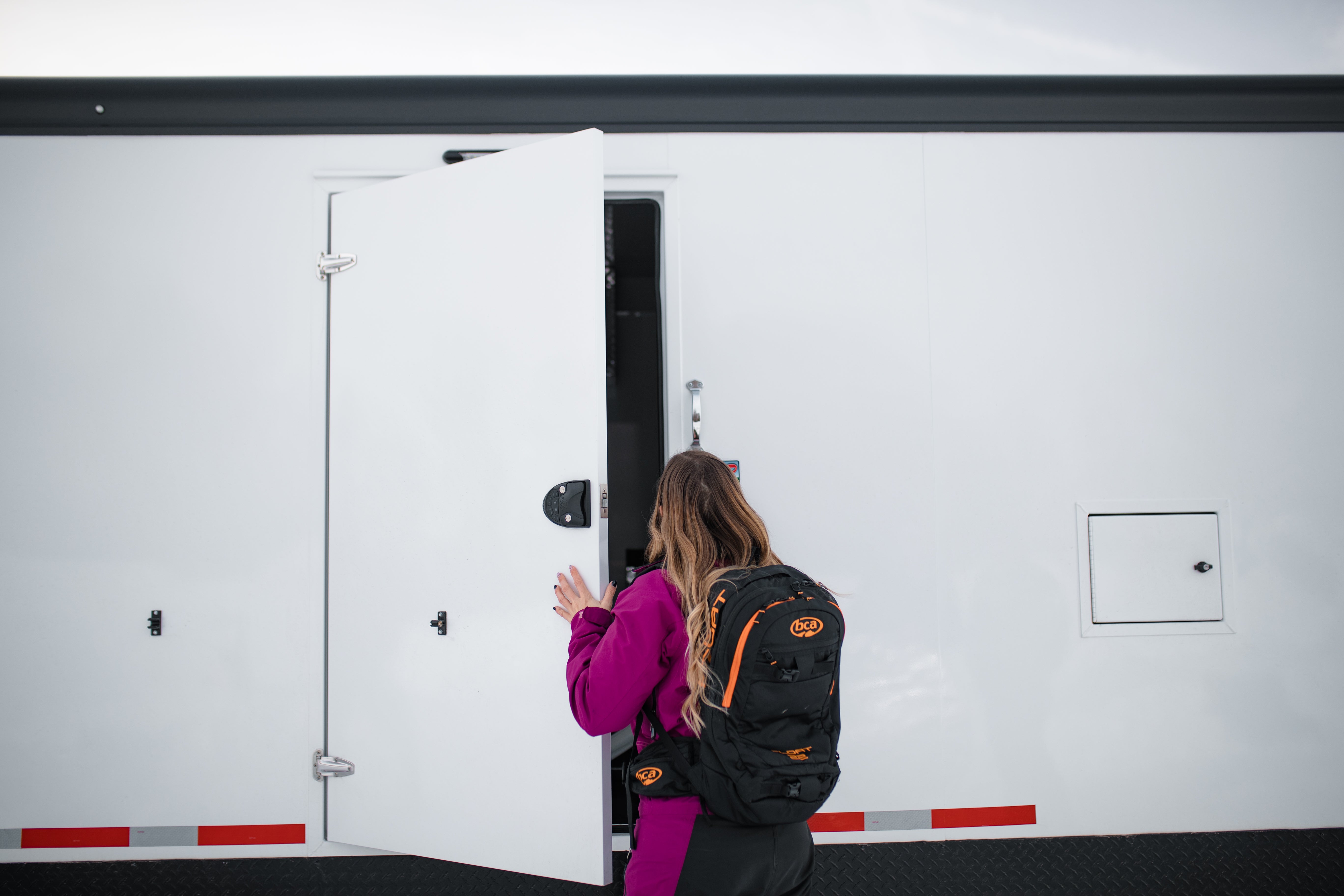As the winter approaches, it's essential to prepare your RV or travel trailer for the colder weather. While many RV owners focus on winterizing the plumbing and heating systems, it's equally important to pay attention to smaller components like your keyless RVLock handle. This vital component is your first line of defense against intruders and the elements. To ensure it functions smoothly during the winter season and beyond, follow these essential steps for preparing your keyless RVLock handle for the winter:

Remove Batteries to Avoid Corrosion and Battery Drain:
RVLock keyless entry handles use battery power to operate their keyless features, so it's important to remove the batteries when storing your RV for the winter. Remember that your RVLock handle will function as a mechanical handle when the batteries are removed, so don’t forget to store your keys outside of your rig. Batteries left in the handle during the off-season can corrode and leak, potentially damaging the internal components. Plus, it will prevent your batteries from slowly draining over time. Remember to store your batteries in a cool, dry place to maximize their lifespan. We have a blog post on how to best preserve your RVLock's battery life here.
Turn Off the Switch on the Inside of the Handle:
If you plan to store your rig for the winter, locate and turn off the switch on the inside of your RVLock handle. This step is helpful to prevent your keyless RVLock handle from constantly searching for a FOB to connect to. If you choose to take your batteries out of your RVLock this will do the same as turning off the switch, so this would be an extra precaution.
Lock Deadbolt and Paddle Lock for Security:
Even during the off-season, your RV can be a target for thieves. Lock the deadbolt and paddle lock on your RVLock handle to deter any potential intruders. This extra layer of security gives you peace of mind that your RV is well-protected throughout the winter months. Don’t forget to keep your keys stored with you, as your RVLock handle’s keyless features will not function without the batteries.
Check Foam Gasket for Any Gaps:
Before storing your RV, check that there aren’t any hairline gaps in your foam gasket (the foam seal between your RVLock handle and the door). The foam gasket around the RVLock handle is designed to create a watertight seal. Over time, it could wear down or develop gaps that would allow water to seep inside. Examine the gasket carefully, if you notice any hairline gaps you can add a small bead of silicone to seal the area. For any large or abnormal gaps, please contact our customer service at 888-316-9899 or email Support@RVLock.com. A snug, intact gasket will keep the cold and moisture outside, where they belong.

In conclusion, properly winterizing your RVLock handle is an often-overlooked but critical step in RV maintenance. By following these steps, you can protect your RV from potential security breaches, battery corrosion, and the ingress of cold, moisture, and unwanted visitors. With a little care and attention, you'll ensure your RVLock handle continues to serve you well during the winter season and for many adventures to come. For best RVLock usage ensure that you aren't making these 3 common mistakes.
See you on the road!



Share:
The Best RV Parks Near Amusement Parks
5 Warm Places to Escape to in Your RV During Winter
5 comments
RVLock batteries should last about 8months-1year. If they are dying quickly (especially every 2 weeks) please file a warranty claim and they can get you taken care of. https://www.rvlock.com/pages/support
my keelock goes thrugh batters about 2weeks its is user about 5X in that time what can u do about this
Thank you for the timely reminder. I just finished wintering the water system and completely overlooked the RV keyless lock.
So far in 4 years of RV Lock Compact use I have never removed the batteries in the wintertime to prevent corrosion. A couple of those years it has gotten down near zero in North Texas. I do change the batteries once a season. Great product.
thank you for this information, i never throught about winterizing my new rv locks. definetly will make sure i do this when i close up the camper for the winter.
joe